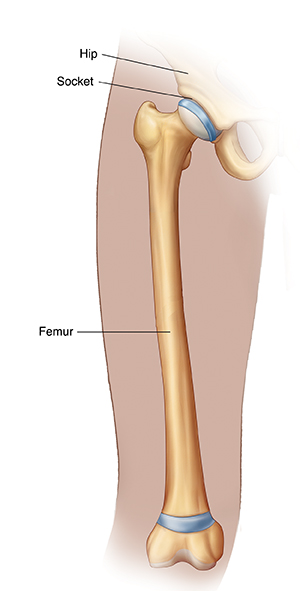Understanding Femoral Osteotomy for Your Child
A femoral osteotomy is a type of surgery. Your child may need it if they have a problem with their hip joint and femur. The femur is the thighbone that joins the pelvis to the knee. During this surgery, a small part of the femur is cut out so the bone fits better into the hip socket.

How to say it
FEHM-uh-ruhl ohs-tee-OHT-uh-mee
Why a femoral osteotomy is done
This surgery is most often done in children who are born with a hip abnormality, such as hip dislocation (developmental dysplasia of the hip). Your child’s healthcare provider may advise it when the top of the femur does not fit well into the hip socket. Your child’s pelvic and femur bones may not work together the right way. The femur may be angled too far forward or backward. Your child may walk with inward- or outward-facing toes.
Your child may also have this surgery if they have:
-
Legs that are of different lengths
-
Cerebral palsy. A child with this condition can have severe muscle spasms that can cause the hips to come out of their sockets.
-
A broken bone that didn’t heal well
A femoral osteotomy can ease pain in the hip joint. It can also help your child run and walk more normally. And it can correct inward- or outward-facing toes.
The surgery is often done to delay a joint replacement.
How femoral osteotomy is done
This procedure is done in a hospital. During it:
-
Your child is placed on their back on an operating table.
-
Your child is given medicine to make them fall asleep. Your child won’t feel pain during the surgery.
-
A surgeon makes a cut along your child’s femur near the hip joint.
-
The surgeon uses X-rays to confirm where they will cut out a small part of the femur.
-
The surgeon cuts the femur with a tool called an osteotome.
-
The surgeon puts the femur in the right place. If needed, they turn it so the top part of it fits as it should into the hip socket.
-
The surgeon attaches a plate with screws or pins to the top of the femur. The plate helps align the femur in the hip socket and keeps the bone in place as it heals.
-
The surgeon closes up the incision.
-
Your child may be put in a spica cast to maintain correct hip alignment.
After femoral osteotomy
Your child should be able to put weight on the leg 4 to 6 weeks after the surgery. This is the goal if your child was walking before the surgery. Your child may need more help getting around at first.
Your child will also need to do physical therapy after the surgery. In some cases, the metal plate may need to be removed at some point in the future.
Risks of femoral osteotomy